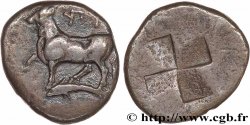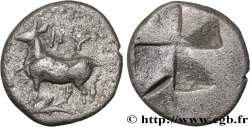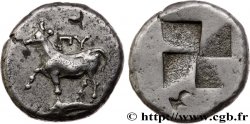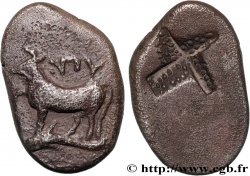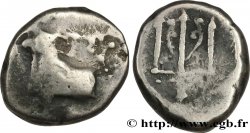bgr_481184 - THRACIA - BYZANTION Hemidrachme
недоступный.
Товар уже продан в нашем интернет-магазине (2020)
Цена: : 150.00 €
Товар уже продан в нашем интернет-магазине (2020)
Цена: : 150.00 €
Тип Hemidrachme
Дата: c. 340 AC.
Монетный двор / Город: Byzance, Thrace
Металл: silver
Диаметр: 11 mm
Ориентация осей монеты: 6 h.
Вес: 1,85 g.
Редкость: R1
Комментарии о состоянии
Exemplaire sur un petit flan épais un peu court, au droit sur le protomé. Très joli revers. Patine grise superficielle avec des reflets dorés
Ссылки в каталоге: :
Лицевая сторона
Аверс: легенда: (BY) ARCHAÏQUE.
Аверс: описание: Protomé de vache passant à gauche, placée sur un dauphin tourné à gauche ; au-dessous, un monogramme.
Обратная сторона
Реверс: легенда: ANÉPIGRAPHE.
Реверс: Описание: Trident vertical ornementé dans un cercle linéaire creux.
Комментарий
Pour ce type, nous avons l’hémidrachme et le diobole, seuls les poids permettent de les différencier. Notre monogramme (GRL) ne semble pas recensé pour l’hemidrachme, mais se rencontre pour le tétradrachme (Babelon, Traité, p. 981-982, n° 1532). Ce type ne semble pas repris dans le traité d’Ernest Babelon avec ce monogramme.








 Cообщить об ошибке
Cообщить об ошибке Распечатать страницу
Распечатать страницу Отправить мой выбор
Отправить мой выбор Задать вопрос
Задать вопрос Consign / sell
Consign / sell
 Информация
Информация